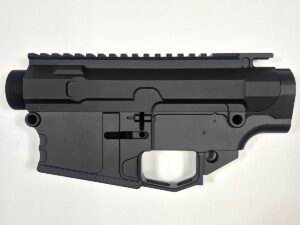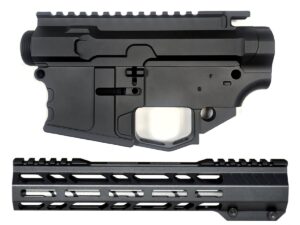Buying An 80 Percent Lower Receiver
Most people who have built there own AR have done so, because they realized building from the ground up will make the perfect weapon designed just for them. But others may not see it this way, and may think that the extra effort is a waste of time. Why build when you can buy off the shelf, or even second hand from someone who has already customized? And even if you were going to buy a load of add-ons for your weapon, why would you buy and modify an 80% lower receiver?
Well, actually, there are lots of really good reasons why you would want to do that, like: You control the build. Have you ever wanted a gun that you can truly call unique? Sure, it might be similar to your buddies AR, but this one has been built – by you – to your own specification and standard. And if you really know what you are doing, then your weapon will be perfectly suited to you and your style of shooting. There is just no beating that. At the heart of every well thought out and built AR15 is an 80% lower receiver.
It’s Cost Effective
Depending upon the standard and base material that you purchase, an 80% lower receiver may be quite expensive. Don’t forget that you need to buy tools and jigs too to make sure that it is really accurate. But building guns like this is also addictive and by the time you have built a couple of custom AR15 or 308, you are starting to see big savings, because you already have the tools. Once bought, used often, and the more often you use them, the more cost effective they become.
It Cuts Down On Paperwork
If standing in line to get official paperwork fills you with horror, then stress less with an 80% lower receiver. These particular parts are regarded as unfinished and are certainly not a firearm in the eyes of the ATF. This means that you don’t need to have one of their Firearm Transaction Records, and no one likes tedious paperwork anyway.
No Need For A Serial Number
By the same token as above, because you have built an AR using an 80% lower receiver, you don’t need to have it officially recognized by getting a serial number in most states. The lower receiver is regarded as the center of the gun and a part that has to be in place for the gun to operate, and by that measure, the part that is usually designated to carry a serial number. Despite the fact that there are plenty of other parts absolutely essential to the gun – upper receiver, fire control group, barrel, etc – but they don’t carry such marks. But is this really an issue?
Let’s get one thing straight; Federal law prohibits any gun registry of any kind from being created by the federal government, and any move to do so could be seen as an assault on your basic rights. However, due to the ATF’s firearm regulations and a handful of existing gun laws, every firearm dealer must retain a copy of your Firearms Transactions Records for at least twenty years! These are records that must be provided to law enforcement agencies upon request, so it becomes legislation by stealth. We are facing an unknown future and with a world that seems to be going sour very quickly, who knows when some ill-conceived legislation might not demand that a gun registry be set up. And from here it’s only a short step at an attempt on firearms or even removal of them from certain targeted user groups.
Having the potential for a firearm for self defense that is off-grid suddenly becomes quite attractive, and that means building one privately, such as an 80% lower receiver. Our guns defend our lives so let’s not even start to allow legislators to consider steps that might curtail our using them.
So, there are plenty of reasons why you should build with an 80% lower receiver, but many people are still put off by what seems to be quite an onerous task. The short answer to this is ‘don’t be’. Building in this way is one of the best was to get the gun that you want and pretty cheaply too.
If you are going to use an 80% lower receiver, you are also going to want to get a full suite of jigs and tools to make sure that you get it right first time and don’t end up with a load of scrap metal in place of the beating heart of an AR rifle. Okay, so all this tooling and jig work is going to add initial cost but since they usually made of high strength aluminum, they aren’t going to wear out quickly so you could be building many guns without having to renew your jig tools.
Building AR’s is an engaging and fascinating pastime and if you get good at it, you could even start to make a business out of building them to order. However, if you do want to do that, you need to consider our fourth point and the issue of serial numbers. Currently, Federal law does not require a homemade gun to have a serial number, as long as it remains in the possession of the original maker. However, if the gun is subsequently sold on or otherwise transferred to a new owner, it should be marked prior to its disposition. Also, while the ATF suggests that all homemade firearms be marked with a serial number as a safeguard in the event the firearm is lost or stolen, they require it if the gun is otherwise lawfully transferred once it has been built.
If you are building, be careful with what you are doing, but make sure and have fun learning this useful skill.


